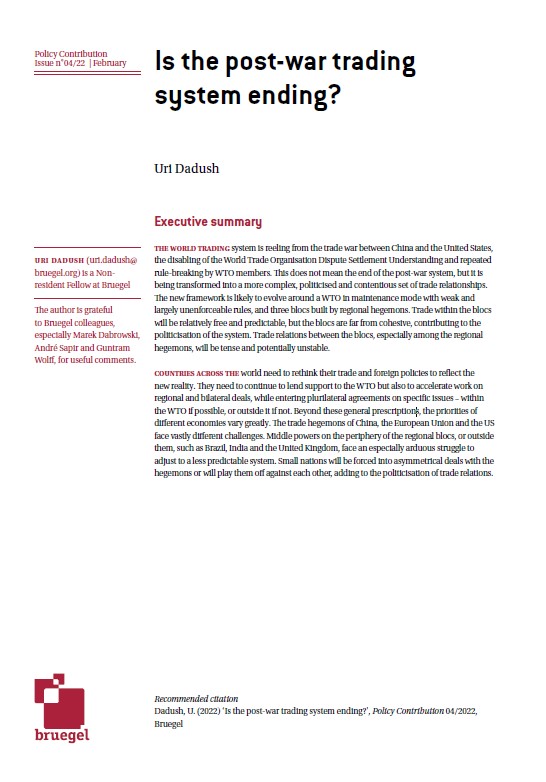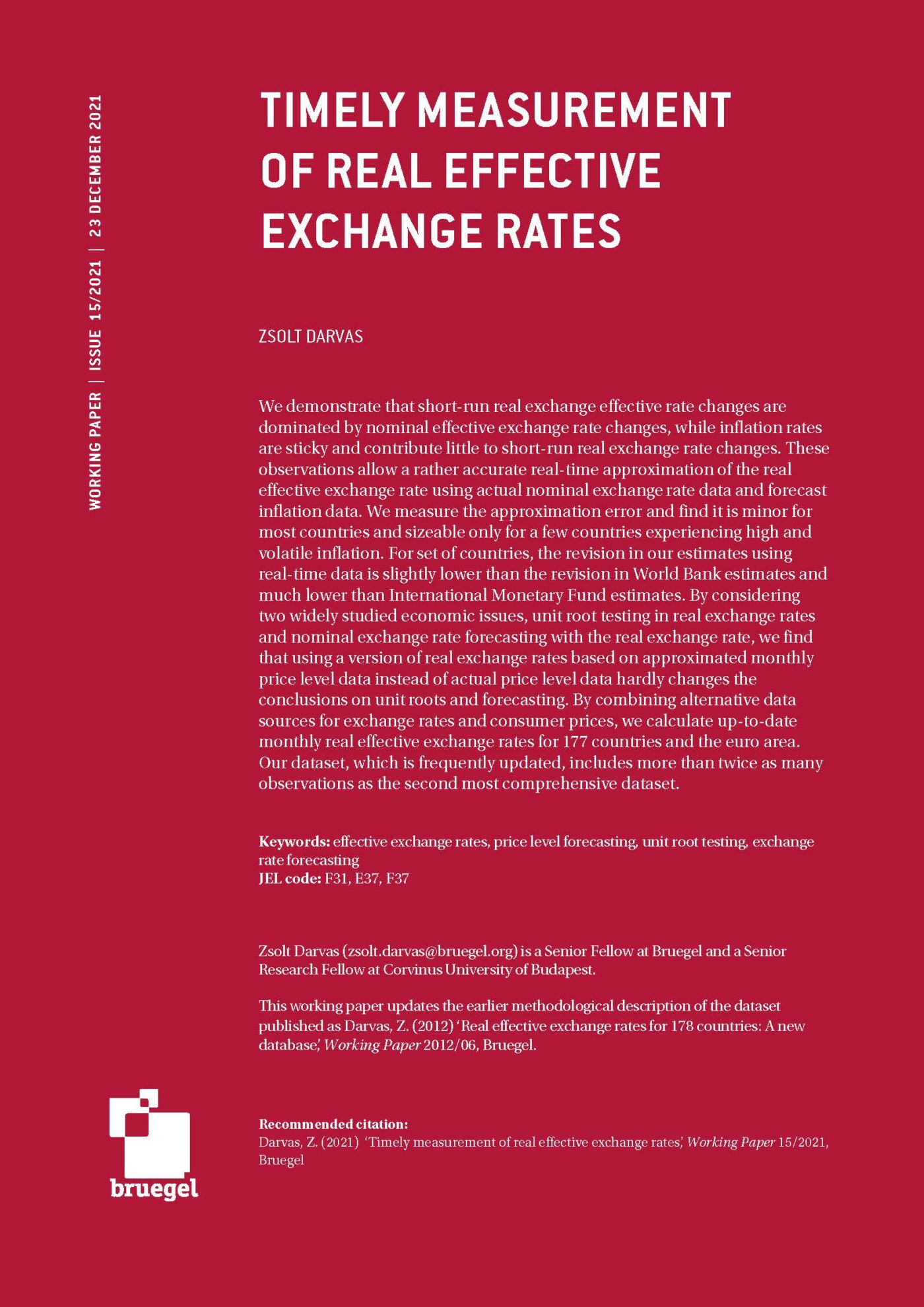Blog Post
Can the EU-India Free Trade Agreement be revived?
India and the EU must adopt a flexible approach, and iron out differences on crucial issues, to ensure that the India-EU FTA becomes a reality.
Free Trade Agreement (FTA) negotiations have been ongoing between the EU and India for more than nine years now. The FTA aims to reduce tariffs on goods, facilitate trade in services, and boost investments between the two sides.
The EU is India’s largest trading partner. The two-way trade in goods between India and the EU stood at $ 98.5 billion in 2014-15, and India received $24.91 billion in Foreign Direct Investment (FDI) equity inflows from EU between April 2012 and May 2015. Trade between the two countries would likely swell if the countries could firm up the long-pending Free Trade Agreement, officially known as the Broad-based Investment and Trade Agreement (BTIA).
Negotiations for an ambitious and broad-based FTA were launched in June 2007.
Negotiations for an ambitious and broad-based FTA were launched in June 2007. But after 12 formal rounds of talks, and several technical meetings and discussions, negotiations came to a de facto standstill in Summer 2013 due to a mismatch of ambitions and expectations.
Negotiations focused on market access for goods and services, and included a meaningful chapter on government procurement and sustainable development. Discussions resumed in January 2016, to assess whether sufficient progress can be made on key outstanding issues before negotiations are formally begun again.
At the EU-India Summit of 30 March 2016, President Juncker of the European Commission declared his support for progress in the negotiations, provided there is movement on the outstanding issues. The EU’s new trade strategy, released by the European Trade Commissioner Cecilia Malmström in November 2015, also promises to advance on the FTA with India. The trade strategy defines the EU’s trade policy agenda for the next five years, and focuses on creating growth and jobs in Europe, promoting sustainable development around the world and strengthening ties with important trading partners. It aims to make the EU’s trade agreements more effective, and create more job opportunities in the EU.
As part of the new trade strategy, the EU concluded FTAs with Singapore, Canada and Korea, and is currently negotiating FTAs with Japan and the ASEAN group. India could gain from an FTA with the EU, particularly in regard to preferential and duty-free access to the European market.
During FTA negotiations, both sides have committed to a comprehensive agreement. This involves eliminating tariffs on more than 90 per cent of goods trade, and a strong general agreement on trade in services. Agriculture issues are also under negotiation. In the 12 rounds of negotiations held so far, the FTA has managed to reach consensus in important areas such as rice, sugar, textiles, and pharmaceuticals and to some extent the wine sector.
However, the negotiations have been tedious. The path to finalising the FTA fraught with difficulties, given India’s high trade-related regulatory barriers and partial access to a few service sectors like professional services, financial services and government procurement.
Some of the key contentious issues are follows. India wants the EU to give it greater market access in the services (especially Mode IV) and pharmaceuticals sectors. It also wants the EU to provide data secure nation status (beneficial to India’s IT sector), and liberalise visa norms for Indian professionals.
The EU wants India to overhaul its financial sector, cut taxes on wines and spirits, and reduce tariffs on the dairy sector.
On the other hand, the EU wants India to overhaul its financial sector, cut taxes on wines and spirits, and reduce tariffs on the dairy sector. It also wants India to create a stronger intellectual property regime and reduce duties on cars. With regard to the financial sector, the EU has requested various regulations on bank branches, numerical quotas, foreign ownership, equity ceilings, and voting rights, among other changes. Whether India can summon the political will to satisfy the European demands is difficult to determine.
The negotiations have reached a roadblock on the question of whether the EU will liberalise its visa regime for Indian professionals. With over half its population under the age of 25, India’s trade policy, driven by demographic considerations, focuses on creating jobs, along with maintaining exports. India’s demographic advantages have provided it with a skilled, competitive, English-speaking workforce, which Europe will lack in the near future.
Considering this, India places considerable importance on Mode IV. Mode 4 refers to the presence of persons of one world trade organisation (WTO) member in the territory of another, for the purpose of providing a service. This enables the free movement of individual professionals by committing to measures such as a relaxation of immigration norms. But the EU has been unable to take on a unified position on the matter, as member states decide immigration policies rather than the European Union as a whole.
High customs duties on European products such as cars and alcohol also remain key issues. The Indian car industry is apprehensive about its level of competitiveness due to high costs of inputs, the rupee’s depreciation and the cascading effects of various taxes, as well as the economies of scale the EU car industry enjoys.
The intellectual property rights (IPR) provisions in the draft FTA between India and the EU also raised concerns, as they will limit the capacities of both India and the EU to use the public health safeguards and flexibilities allowed in the World Trade Organisation’s agreement on trade-related aspects of IPR.
The provisions on IPR are problematic on various levels, particularly in the areas of expansion of copyright, inclusion of trade-related aspects of IPR plus provisions, cross border measures, liability of service providers and enforcement mechanisms.
Negotiations are also stuck on the issue of Indian policy on government procurement. The Government of India considers government procurement a sensitive issue from a development perspective and is reluctant to make any changes in its policy.
The importance of signing the India-EU FTA is immense.
The importance of signing the India-EU FTA is immense. With world trade shifting away from the “most-favoured nation” trade route towards mega trade pacts such as TPP and TTIP, India must sign the FTA with the EU as early as possible.
However, the Indian Government has made slow progress on free trade agreements (FTAs), as the earlier trade deals that India signed with Japan and Korea have not yielded the expected results. In fact trade with these countries decreased after the agreements were signed.
In the last year, India’s approach to negotiating regional and bilateral free trade agreements (FTAs) has been in sharp focus. India’s focus on apparent ‘non-negotiables’ has made its position overly defensive and unproductive. The ongoing India-EU FTA negotiation is no exception to this.
For instance, the EU’s demand to lower import duties on cars is being resisted by the industry lobbies in India, forcing the Indian government to stay firm on lowering tariffs on the agriculture and dairy sector, in which the EU has a comparative advantage. India is seeking greater market access for its professionals under Mode 4, but the EU is reluctant to allow easier entry to Indian professionals given the political pressure for it to protect local jobs.
The India-EU FTA is much broader in scope than other FTAs that India has signed so far. As the EU is India’s largest trading partner, the only way forward is to push for more bilateral discussions with EU negotiators. India must move forward and compromise, and give up its position on imports of agriculture and dairy products. It must also stop pushing for too many concessions on Mode IV, given that migration is a sore point in the developed countries at the moment.
Given the bleak export scenario in India, with exports having declined in the last year, the Indian government must make the India-EU FTA a priority. The FTA would give India’s textiles and jewellery exporters greater market access in the European Union, and provide a much needed boost to India’s exports and external sector.
India is fully aware of the fact that by delaying the FTA process it is becoming increasingly isolated on the global trade front, with both the US and the EU not taking the negotiations in the WTO forward.
Unfortunately, despite talks of a potential revival of the stalled Europe-India FTA, the chances of it getting signed soon remain grim. Blockages in India’s tariff and non-tariff barriers policy and the EU’s reluctance to open its door to Indian professionals in the IT sector will be hard to overcome.
Partners must relent on certain issues. For instance, India need not fear giving access to the European car industry. The Indian car sector is hugely competitive and has sufficient demand from within the country.
Similarly, the Indian dairy sector should be able to cope with the reduction of tariffs on dairy imports from EU. But if both India and the EU adopt a flexible approach and iron out differences on crucial issues, the India-EU FTA could become a reality.
Republishing and referencing
Bruegel considers itself a public good and takes no institutional standpoint. Anyone is free to republish and/or quote this post without prior consent. Please provide a full reference, clearly stating Bruegel and the relevant author as the source, and include a prominent hyperlink to the original post.










